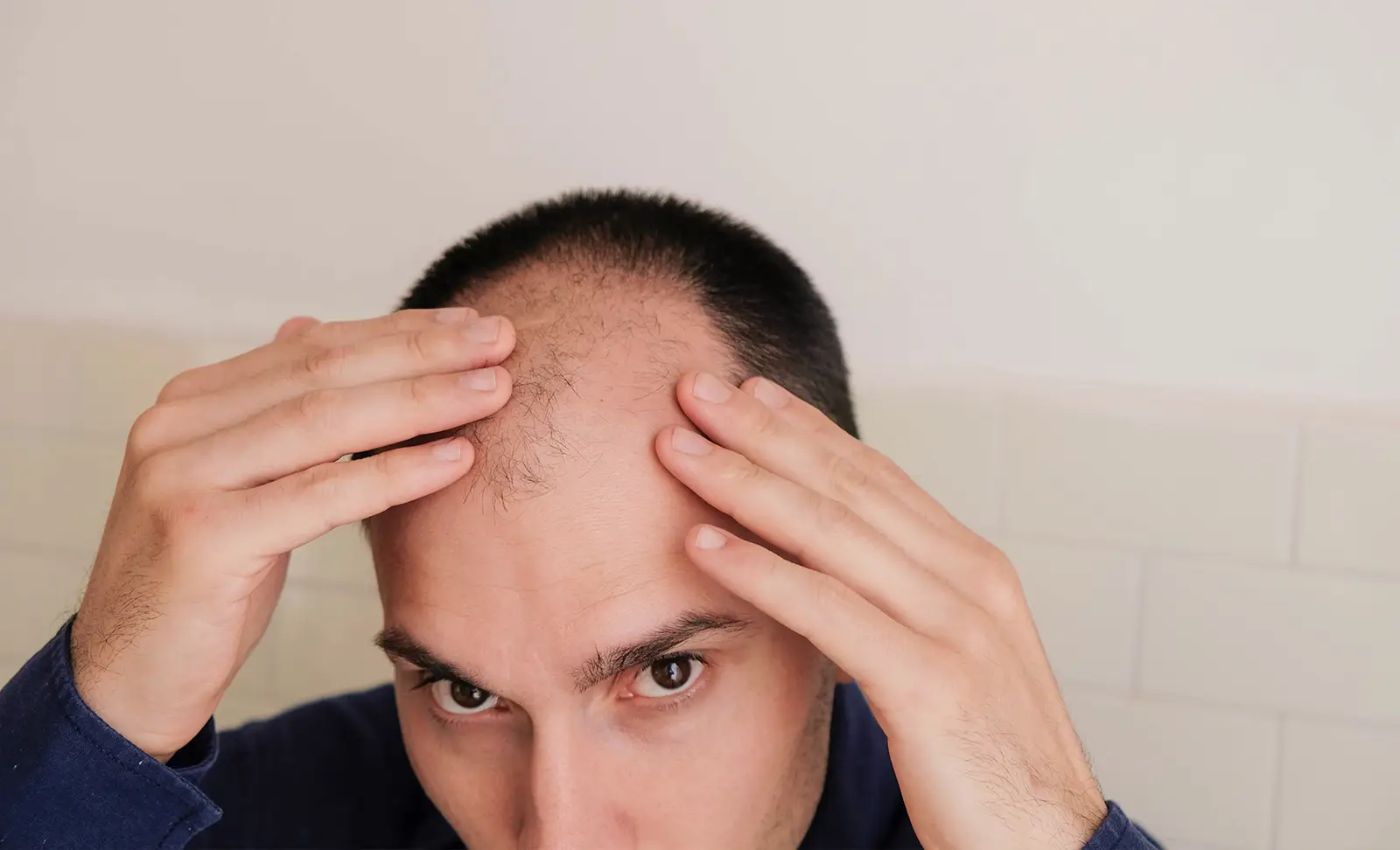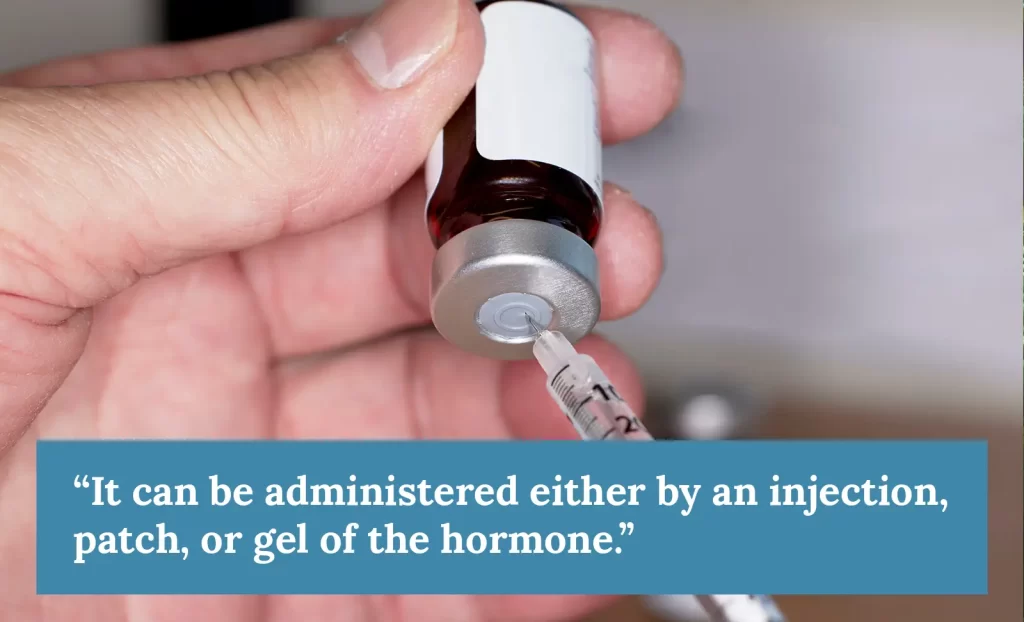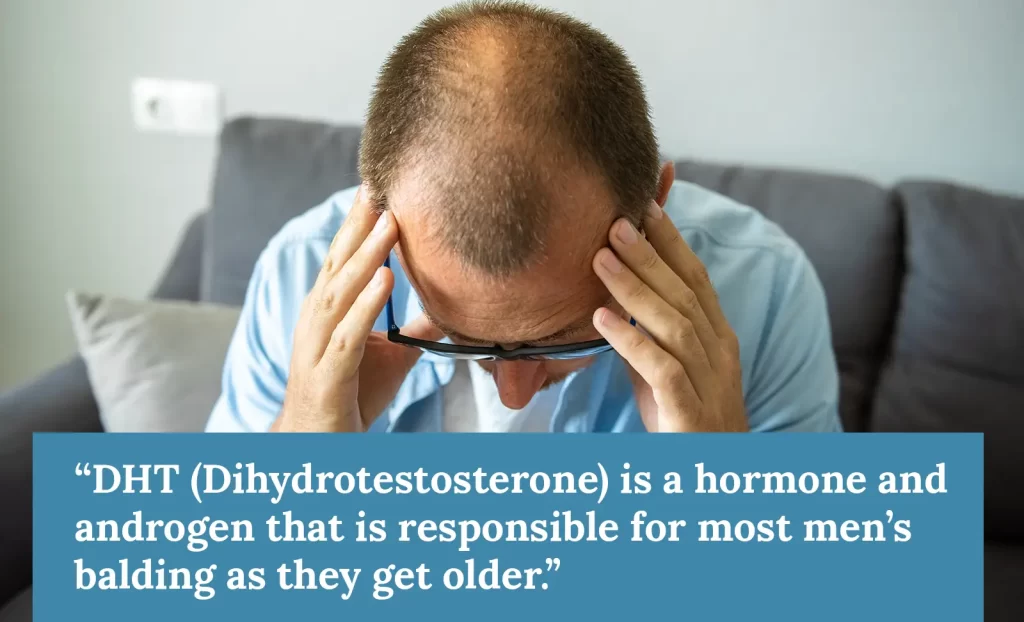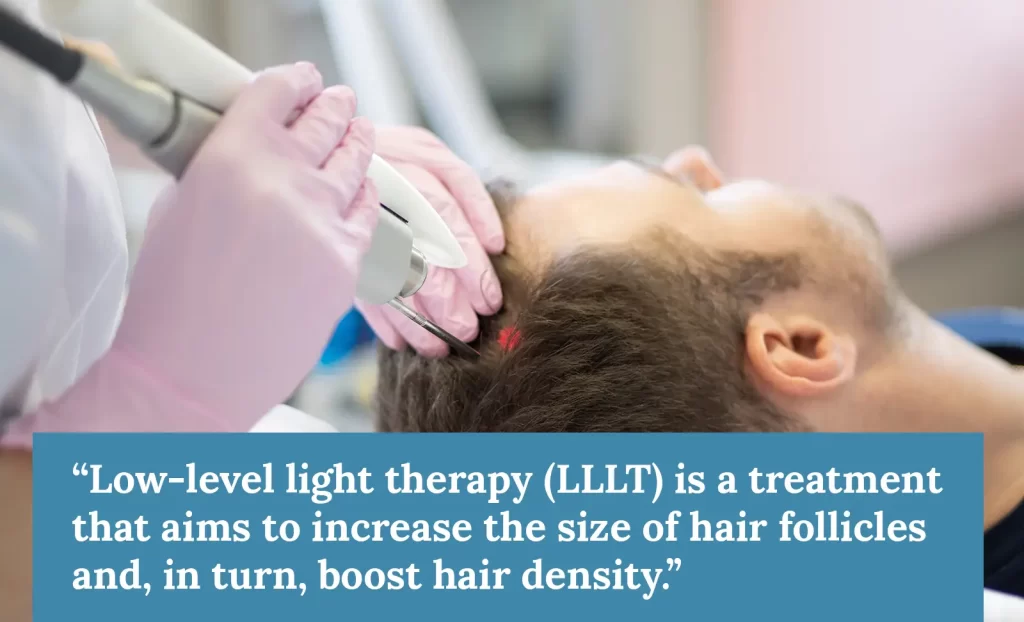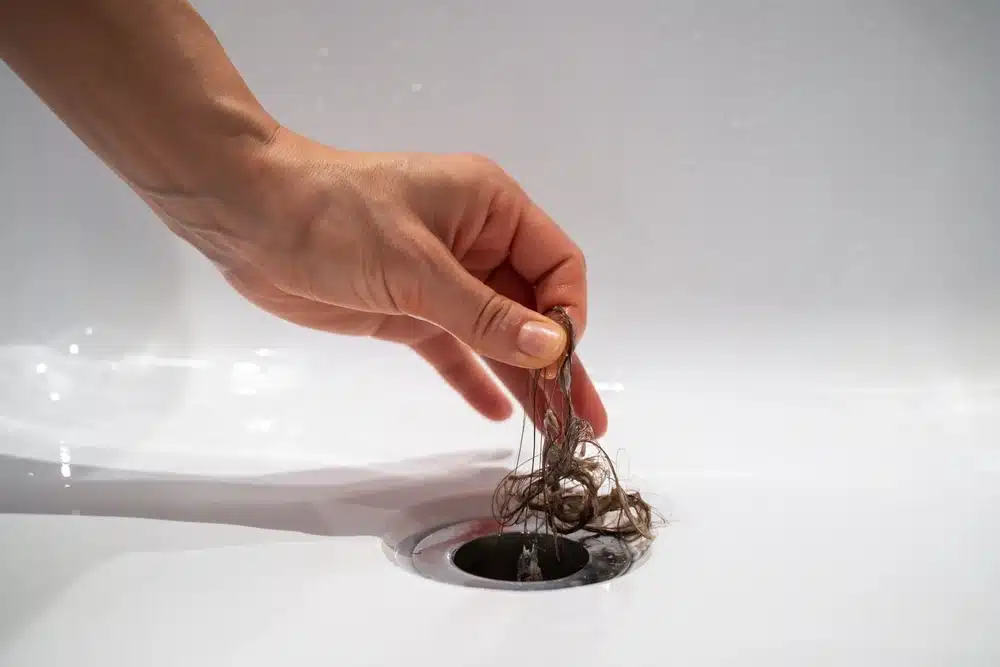Testosterone is a hormone produced in the testes of men. While women do have some testosterone, it’s far more prevalent in men. It’s responsible for a lot of male-dominant traits and characteristics, such as the production of sperm, sex drive regulation, muscle mass, and the growth of facial hair.
Sometimes, men become too low in testosterone, which may lead to some issues. That’s why TRT – testosterone replacement theory – exists. The problem is that TRT isn’t a simple procedure that you should get without worries, as it comes with some risks and side effects, in particular, the potential for hair loss. In this article, learn all you should know about TRT and hair loss. We’ll cover the key question: does TRT cause hair loss? Hopefully, we’ll help you make the right decision regarding your health!
What is TRT?
Testosterone replacement therapy is a pretty simple concept. The aim of it is to increase testosterone levels in patients, thus also boosting male-dominant traits. It can be administered either by an injection, patch, or gel of the hormone. [1]
Why Do People Need TRT?
The truth is that testosterone naturally lowers with age. However, some men may experience hypogonadism, where the testes no longer produce enough testosterone. [2] As a result, men may experience symptoms such as less body hair and a lower sex drive, something TRT can often reverse. But if it reverses body hair decline, does TRT cause hair loss?
The Misconceptions
The problem with TRT is that there are a lot of misconceptions about the treatment. Some people say it’s the ideal solution for men with low moods and those who want a perfect anti-ageing treatment. The truth is TRT is helpful in those specifically with hypogonadism, but won’t make much of a difference in men who are healthy and losing the right amount of testosterone as they age, which is around 1% per year.
Does TRT Cause Hair Loss?
Many men who go through TRT for the mood-boosting, libido-enhancing benefits may discover something a little more unpleasant: hair thinning. That’s because there is a definite link between the hormone testosterone and the hair, and it’s all to do with DHT.
DHT (Dihydrotestosterone) is a hormone and androgen that is responsible for most men’s balding as they get older. [3] An increase in testosterone will likely cause an increase in DHT, which may mean seeing some hair loss after TRT. However, be aware that DHT only really causes hair loss in men who are already predisposed. Plus, there isn’t a lot of evidence to suggest a huge link between TRT and hair loss. So, when answering the question, ‘Can TRT cause hair loss,’ be aware that it’s a little complicated. Yes – it might trigger hair loss in some men, but it’s not necessarily always the case, and if you need TRT for other unpleasant symptoms you are dealing with, don’t let it put you off. You should always speak to a medical professional about what’s best for you.
Weighing Up the Benefits and Risks of TRT
Before asking your doctor about TRT, it helps to be aware of the benefits and risks of such a treatment. Here are the benefits:
- A Boost in Sex Drive
- An Improvement in Erections
- A Mood Boost
- An Increase in Energy
- Increased Muscle Strength
- Decreased Fat Mass
Then, as well as the potential for hair loss, here are some of the risks and side effects:
- Irritability
- Acne
- Fatigue
- Sleep Apnoea
- Benign Prostatic Hyperplasia
- Enlarged Breasts
- Testicle Shrinkage
- An Overproduction of Red Blood Cells
- Increased Risk of Blood Clots
Should You Get TRT?
If you want to get TRT but are not sure whether it’s right for you, there are a couple of questions to ask yourself first. Remember that it’s normal for testosterone levels to decrease somewhat with age and that some symptoms you may be exhibiting could be caused by something else altogether. You shouldn’t see TRT as a fix-all solution to all health problems.
If you think you need TRT, always speak with your doctor first who can run tests to check your testosterone levels via a blood test. Sometimes, they will need to take a blood test multiple times throughout the day to see how their testosterone levels change as time goes on. If you do have low levels of testosterone, you may be recommended for TRT and able to receive the treatment.
Preventing and Treating Hair Loss While Getting TRT
While TRT doesn’t always cause hair loss, there is undoubtedly a link between testosterone levels and male pattern baldness, which is why it’s good to be prepared before getting this treatment. The good news is there are some helpful ways to prevent hair thinning when going into this treatment.
A DHT Blocker
Testosterone as a whole isn’t entirely responsible for male pattern hair loss; it’s DHT. As such, you can use a DHT blocker when going through TRT, as this will still increase your testosterone levels without producing DHT. The two most common DHT blockers are finasteride and dutasteride, which you can get prescribed by your doctor to manage symptoms.
Minoxidil
Another hair loss treatment you can use while getting TRT is minoxidil. This medication boosts blood flow to the scalp, stimulating the hair follicles and increasing hair growth. It’s usually a topical treatment, although you can also get minoxidil in pill form. While you don’t need a prescription for this, we always recommend speaking to a doctor before trying a new medication, especially if you’re already getting TRT.
Natural Remedies
Some natural remedies might have an enormous impact on your hair growth and should be considered. Rosemary oil is a good example. There has been some research into the effectiveness of rosemary oil for reversing hair loss with some pretty good results, with studies showing it has a similar hair-growing effect to minoxidil. [4] Other natural remedies for hair loss include aloe vera, caffeinated shampoos, hair massages, rice water, and castor oil. With most of these, there is not much risk involved, so if you’re only dealing with slight hair loss, such as a little thinning around the front, they are more than worth trying.
Address Nutritional Deficiencies
It always helps to know the cause of your hair loss. In some cases, it might not be due to an increase in testosterone; it may be because of a nutritional deficiency. Deficiencies in zinc, biotin, Iron, folic acid, and vitamins C, D, and E may contribute to hair loss, so consider getting a blood test to see if you have any. If you do and start taking the correct supplements, your hair loss should reverse.
Low-level Light Therapy
Low-level light therapy (LLLT) is a treatment that aims to increase the size of hair follicles and, in turn, boost hair density. It also aims to stimulate more hair growth and reduce the amount of hair shedding. Trials have shown that it’s a useful treatment that encourages significant hair regrowth, [5] so it’s worth considering. You can get LLLT done by a professional, but there are also home kits you can use.
Hair Transplant
In some cases, a surgical procedure is the only method that will restore your hair. Usually, a hair transplant is for those who have experienced significant hair loss, with men that typically means around the hairline and at the crown of the head. It’s a very effective procedure – it’s more expensive and invasive than other methods on this list, but there’s a near 100% guarantee that the hairs will grow back afterwards.
Are You Considering a Hair Transplant?
A hair transplant is a hair restoration method for those with androgenetic alopecia. If you have been through TRT and have experienced balding due to it, you were already predisposed to male pattern hair loss. In this case, a treatment like a hair transplant is a good option for you.
Hair transplants are highly effective, with the best ones using a method called FUE, standing for follicular unit extraction. It takes hair follicles from one section of the scalp (usually the back or sides where you have healthy hair growth) and then transplants them to the area of the scalp that is balding. Once transplanted, these follicles can grow hair, leading to a natural solution that lasts a lifetime. If you are considering a hair transplant, it’s always best to go with a well-trusted clinic that has the top surgeons on their side, which is exactly what we have here at Harley Street Hair Clinic. If you want to restore your TRT hair loss with the FUE method, get in touch or download our hair track app today.
Does TRT Cause Hair Loss: A Summary
TRT is a hormone replacement treatment for men experiencing negative symptoms because of low testosterone. Testosterone naturally depletes as men get older, but it might happen faster to some compared to others, and, in that case, the treatment can be helpful. Of course, there are symptoms, with TRT hair loss being a potential one. If you do experience hair loss from TRT but still need the treatment, the best thing to do is pursue a hair loss treatment alongside it, such as finasteride, minoxidil, or a hair transplant. If you’re interested in finding out more about hair transplants, go to our patients gallery, where we have success stories of our happy patients!
Sources:
- https://www.webmd.com/men/testosterone-replacement-therapy-is-it-right-for-you
- https://medlineplus.gov/ency/article/001195.htm#:~:text=Hypogonadism%20occurs%20when%20the%20body’s,these%20glands%20are%20the%20ovaries.
- https://www.medicalnewstoday.com/articles/68082
- https://www.sciencedirect.com/science/article/pii/S2468227622001302
- https://www.ncbi.nlm.nih.gov/pmc/articles/PMC8906269/#:~:text=Studies%20have%20shown%20that%20LLLT,in%20both%20males%20and%20females.
